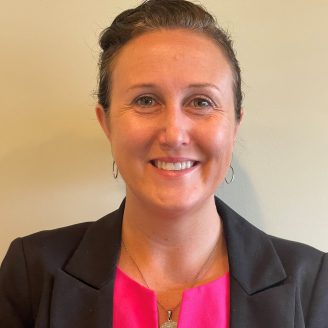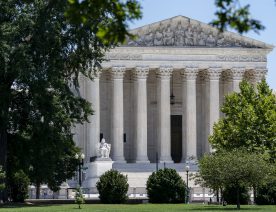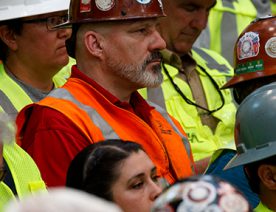
June 15, 2023
The political divisions surrounding confidence in the scientific community and medicine that widened during the COVID-19 pandemic persisted, according to an analysis of the 2022 General Social Survey (GSS) by The Associated Press-NORC Center for Public Affairs Research. Republicans continued to lose confidence in key institutions, seeing a 14 percentage-point drop in confidence in medicine and a 23 percentage-point drop in confidence in science since 2018. Democrats showed a surge of confidence for the scientific community during the pandemic, but that trust leveled off to pre-pandemic levels. Their confidence in medicine was less volatile.
After remaining steady over the past two decades, overall confidence in the scientific community fell in 2022. Just 39% reported a great deal of confidence, down from 48% who said the same in 2021 and 2018.

The drop in overall confidence was mainly due to Republican’s plummeting confidence. In 2018, 55% of Democrats and 45% of Republicans had a great deal of confidence in the scientific community. By 2022 this 10 percentage-point gap widened to 31 points. Overall, Republicans’ confidence fell 23 points and in 2022, was half of what it was in 2018. Confidence among Democrats was back to its pre-pandemic level after a short-term surge of trust during the pandemic.

Although the public’s overall confidence in medicine fell somewhat over the last two decades, there were no major changes in the public’s perception in recent years. In 2022, 34% of adults overall reported a great deal of confidence in medicine, compared to 39% in 2018. And 16% had hardly any confidence at all, up from 12% in 2018.

Historically, both parties have had similar levels of trust in medicine, but political polarization increased following 2018.
In 2018, 38% of Democrats, 39% of independents and 40% of Republicans had a great deal of confidence in medicine. In 2022, Democrats and independents saw no significant change in their levels of confidence compared to pre-pandemic. Over the same time period, however, Republicans saw a 14 percentage-point drop with just 26% having a great deal of confidence in medicine in 2022.

Support increased for government spending to pay for medical care. Forty percent of adults felt the U.S. government should help cover medical care1, the highest point in the last two decades.
Support among Democrats, independents, and Republicans increased since before the pandemic, although it remained a partisan issue. In 2018, 47% of Democrats, 31% of independents and 15% of Republicans supported the government helping with medical costs. In 2022, 55% of Democrats, 42% of independents, and 22% of Republicans expressed the same.

Perceptions of how much the government spends on scientific research remained steady over the past 20 years and throughout the pandemic. In 2022, 47% of adults felt the government was spending about the right amount on scientific research and 43% felt it was spending too little. Just 11% felt that it was spending too much.
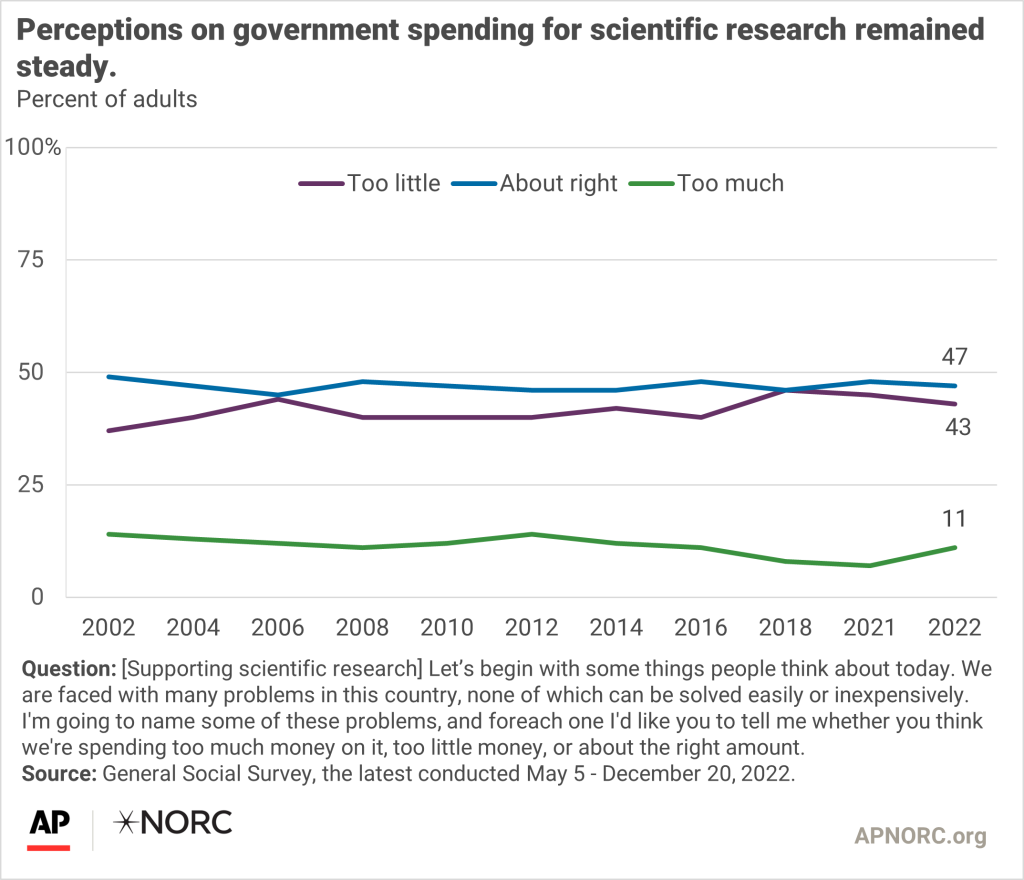
Historically, Democrats are more likely than Republicans to say the government is spending too little on supporting scientific research. This gap widened in recent years – Democrats were 6 percentage points more likely than Republicans to say the scientific community receives insufficient funding in 2016 (44% vs. 38%), and in 2022 they were 14 percentage points more likely to say the same (51% vs 37%).
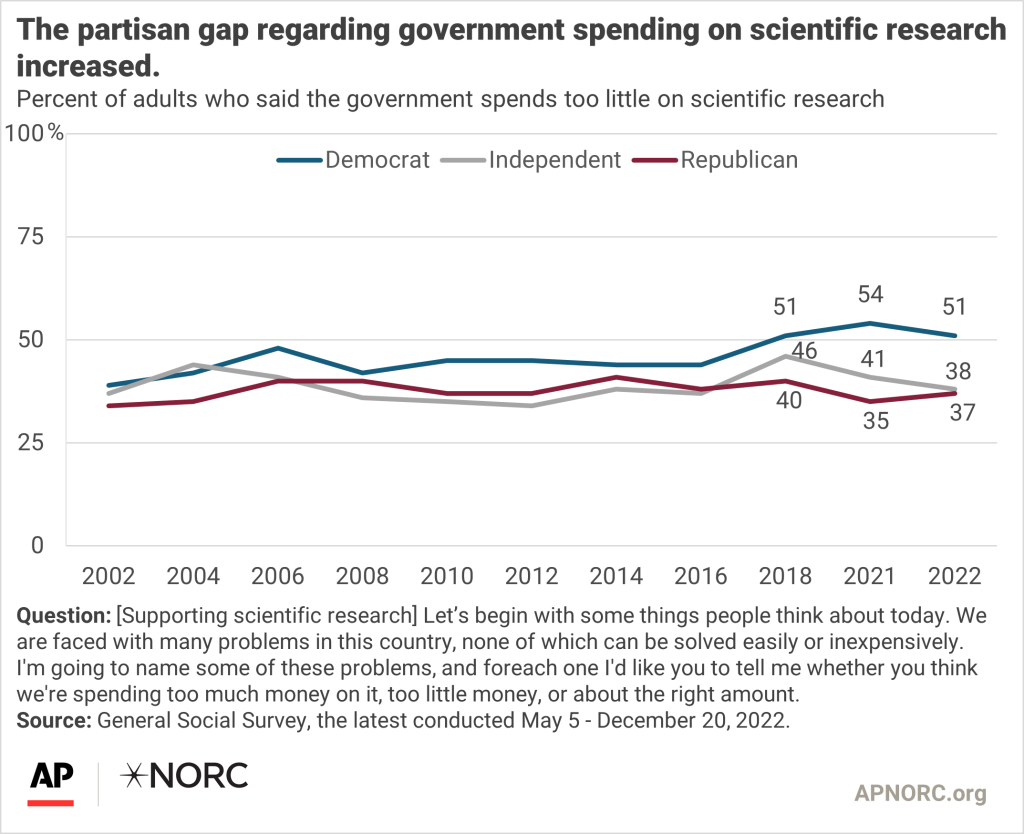
After remaining at a low, but stable level since 2000, confidence in education dropped as COVID-19 led to major disruptions in classrooms across the country. And although school closure and virtual instruction policies had largely ended in 2022, public confidence did not return. In 2018, 25% of adults reported a great deal of confidence in education, while just 19% felt the same in 2022. The number of adults who have hardly any confidence at all, meanwhile, rose to 25%.

Republican confidence dropped off in 2012, when 18% reported a great deal of confidence in education compared to 30% of Democrats. This gap closed during the pandemic as both parties lost confidence, but widened again as Republicans’ confidence dropped another 10 percentage points between 2018 and 2022.
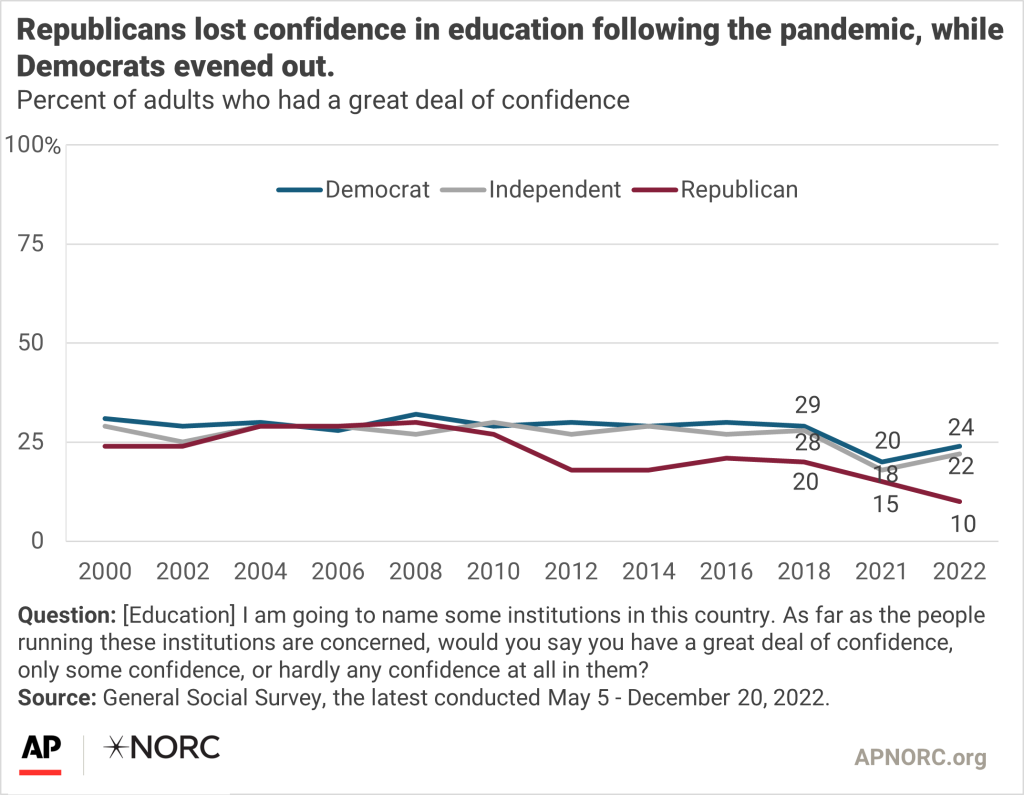
Confidence in the press remained low since 2000, with only about 1 in 10 adults expressing confidence in it each year. Just 7% expressed a great deal of confidence in the press in 2022, down from 13% in 2018.

Democrats saw an increased confidence in the press between 2016 and 2021, but saw it fall again in 2022. Confidence among Republicans remained in single digits.
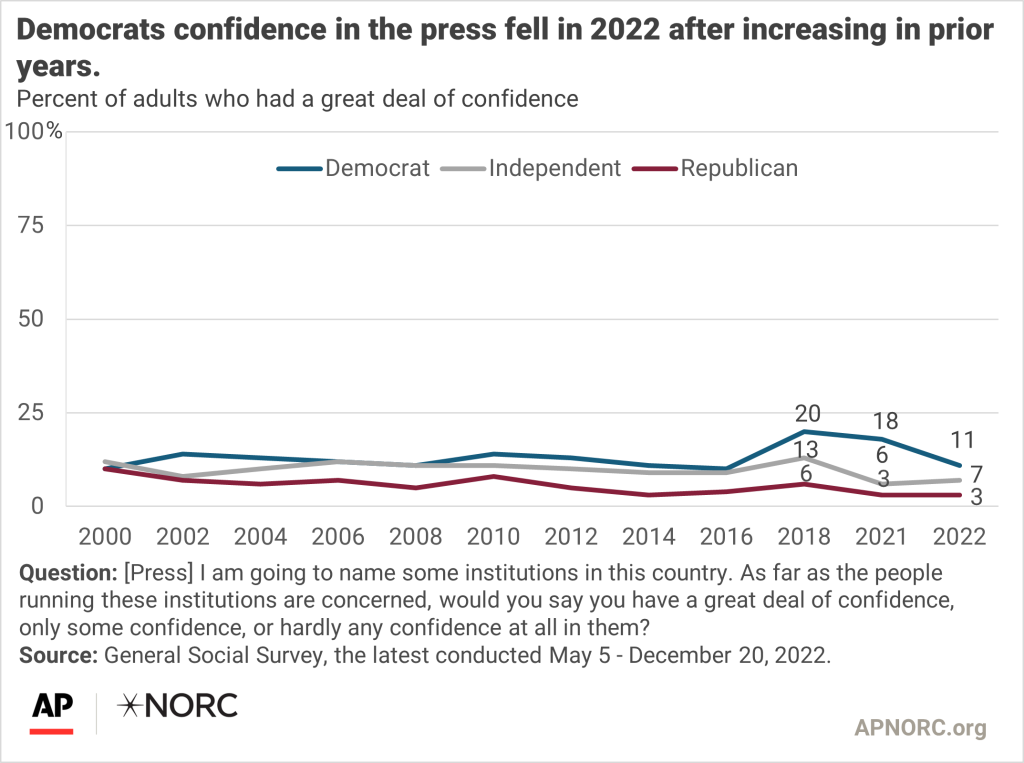
The public’s confidence in major companies has gradually declined since 2000, falling from 21% to 15% between 2018 and 2022.
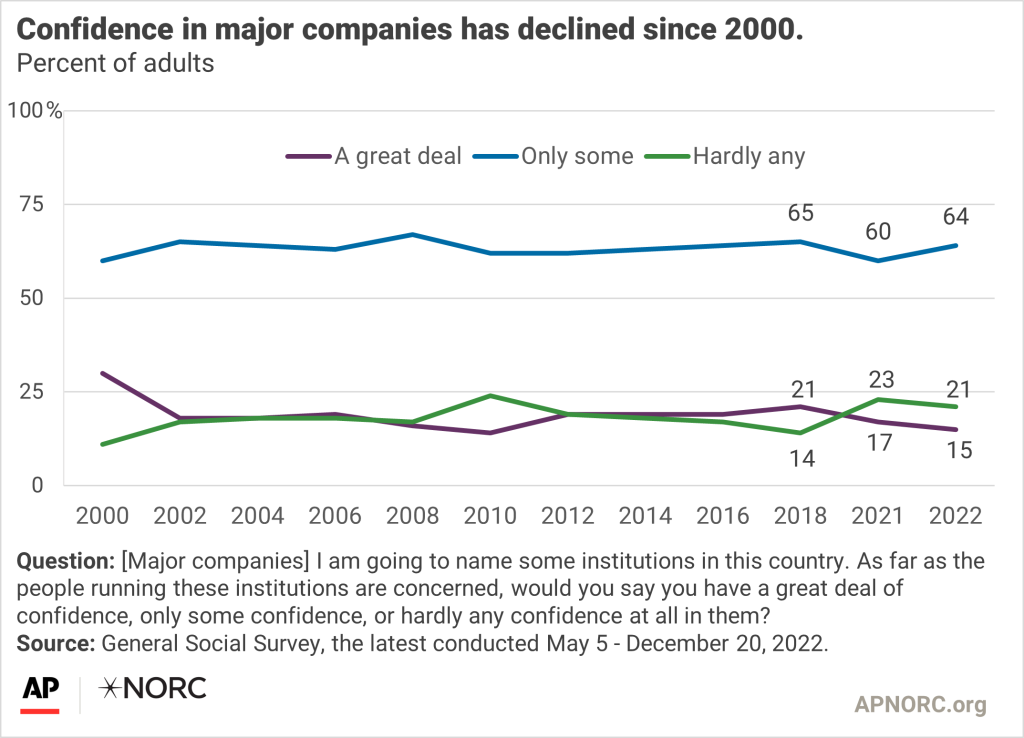
Adults have generally had low trust in major companies, regardless of partisanship. And although Republicans have historically had more confidence in major companies than Democrats, their confidence has fallen off since 2018.

Similarly, few adults had high levels of confidence in organized religion. Just 15% had a great deal of confidence in 2022, while 22% said the same in 2018. And the share of the public who had hardly any confidence at all in organized religion increased, up to 34% in 2022.

Republicans were historically more likely to express a great deal of confidence in organized religion. And while Republican confidence held steady between 2018 and 2022, both Democrats (19% to 11%) and independents (24% to 13%) saw a dip in confidence between 2018 and 2022.
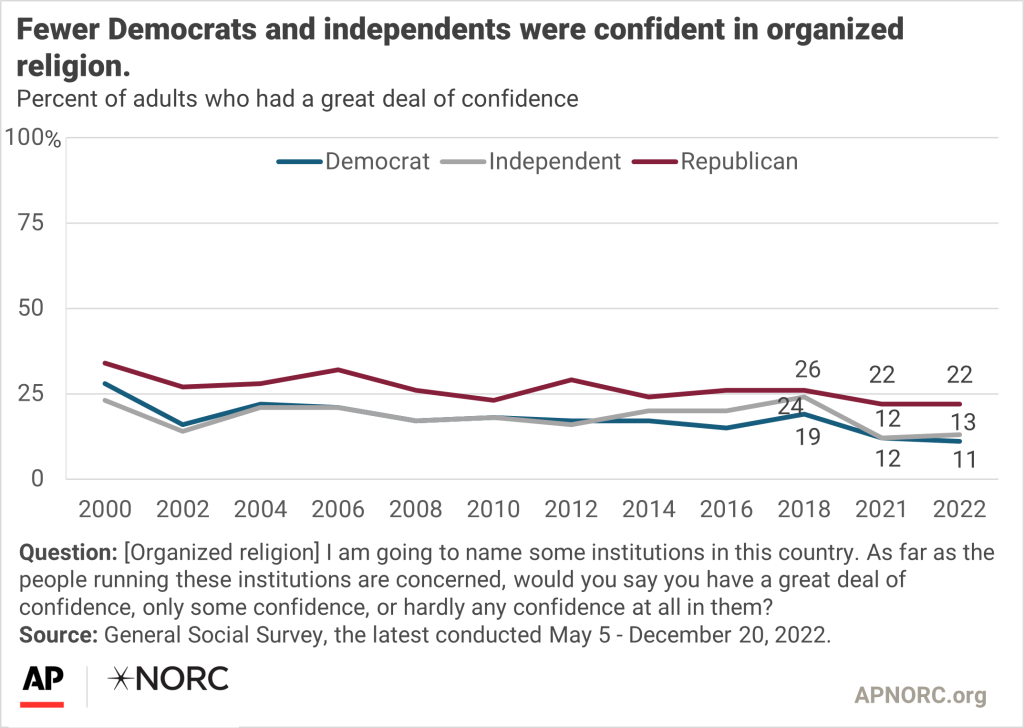
The General Social Survey has been conducted since 1972 by NORC at the University of Chicago. Sample sizes for each year’s survey vary from about 1,500 to about 4,000 adults, with margins of error falling between plus or minus 2 percentage points and plus or minus 3.1 percentage points. The most recent survey was conducted May 5 through December 20, 2022, and includes interviews with 3,544 American adults. Results for the full sample have a margin of error of plus or minus 3.0 percentage points. More information about the 2022 GSS is available here: https://gss.norc.org/Get-The-Data
Changes in opinions, attitudes, and behaviors observed in 2021 relative to historical trends may be due to actual change in the concept over time and/or may have resulted from methodological changes made to the survey methodology during the COVID-19 global pandemic. In 2022, the GSS used a mixed mode approach with both interviewer administered in-person and self-administered web interviewing. The GSS recalculated some weights from past years (see GSS methodology for additional information). These new weights were released in the 2022 data causing some statistics from prior years to change minimally. Data reported prior to the 2022 release may differ slightly.
1 Response options are a 5-point scale where 1 indicates the respondent believes the government should help, 3 indicates agreement with both, and 5 indicates that the respondent believes people should care for themselves. 2 and 4 indicate mid-range response options between agreement and each side. Data reported are respondents who answered 1) The government should help.





